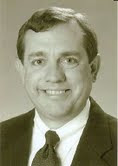Mega-Trends
1. World Catholicism
A church long dominated by Europe and the United States is becoming steadily more global. The most important bit of data is this: In 1900, just 66 million Catholics, representing 25 percent of the global Catholic total, lived in Africa, Asia and Latin America. Today 720 million of the 1.1 billion
Catholics in the world live in those regions, representing 66 percent, or two-thirds, of all Catholics alive. That's an enormously rapid shift, and it implies a rising Southern tide in Catholicism over the 21st century. Mumbai, Nairobi and São Paulo will be to the 21st century what Paris and Milan were to the Counter-Reformation era in the 16th century, meaning the places where new energy first begins to stir. This will drive a far-reaching transformation of Catholic faith and practice.
2. Secularism and Catholic Identity
In response to runaway secularization in Europe and other pockets of the West, Catholicism today is practicing what sociologists call a "politics of identity," aggressively reinforcing its traditional doctrines, rites, and devotional practices. It's a 21st century Catholic version of how Judaism
responded to the destruction of the Temple and the reality of living in diaspora: "building a fence around the law." Just last week has seen two classic examples, with decisions from Pope Benedict XVI to widen use of the pre-Vatican II Latin Mass, and a declaration from the Vatican that Catholicism is the lone true church willed by Christ.
3. Multipolarism
While the economic and military superiority of the United States will not vanish in the 21st century, the rise of a number of other states and non-state actors is creating a more "multi-polar" world with multiple centers of power and influence. Two clusters seem poised to be especially consequential: what Goldman Sachs calls the "BRIC" nations of Brazil, Russia, India and China, who together
represent 40 percent of the world's population, and whose combined economies by 2040 are projected to be larger than those of the United States or Europe; and an emerging "Shi'a axis" from the Mediterranean to Central Asia, in which Iran will play a leadership role.
Friday, July 20, 2007
Changing Demographics
My last post touched our lack of of focus on South American countries to our detriment which is primarily due to the focus on the Middle East and Iraq in particular. The following is a bit of an analysis about the relationship of Catholicism and Europe but does highlight how the demographics of the world is both so important and so rapidly changing. By the way, it is from a weekly email from John L. Allen, Jr., who in his work in covering the Vatican for the National Catholic Reporter, ends up covering the world. Here is a portion of his regular column All Thing's Catholic in "The Vatican's Changing Relationship with Europe":
Subscribe to:
Post Comments (Atom)








No comments:
Post a Comment